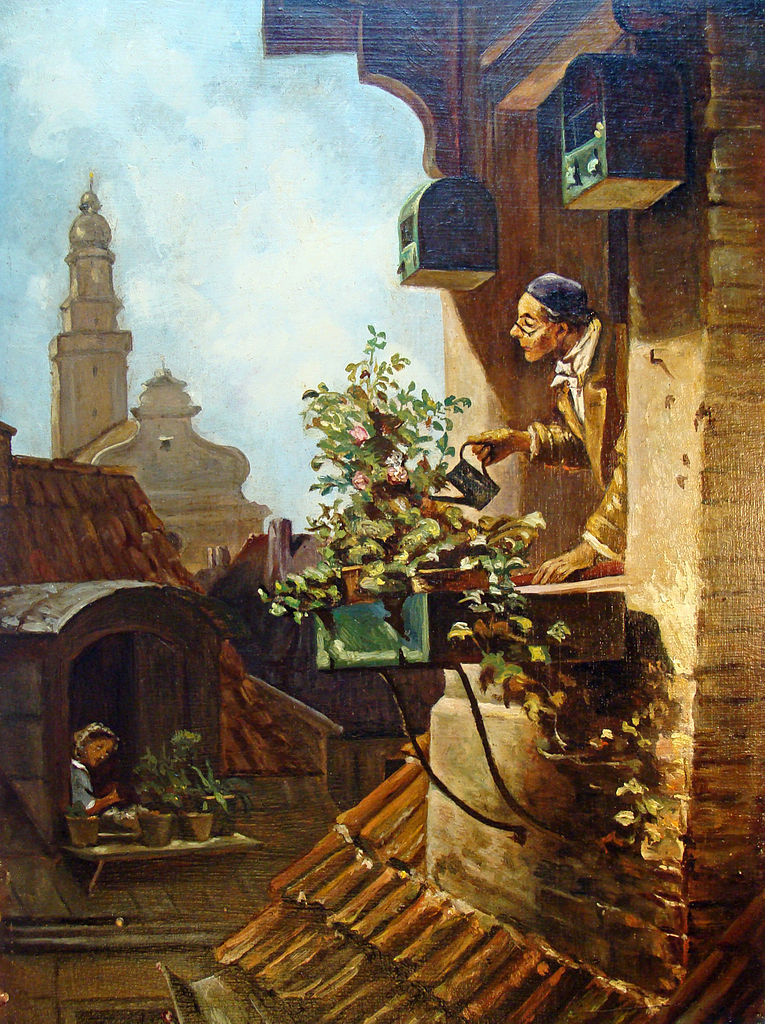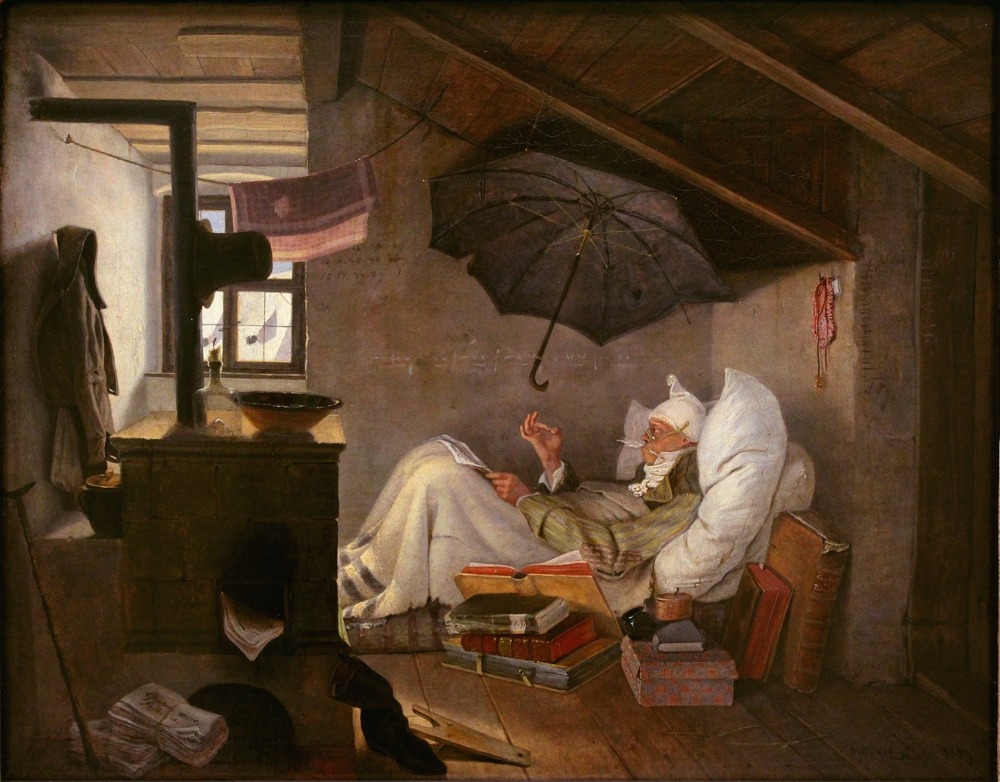 Carl Spitzweg, The Intercepted Love Letter, 1855
Carl Spitzweg, The Intercepted Love Letter, 1855
Carl Spitzweg is a very underrated German painter of Biedermeier period. His canvases are filled with the strangest people; from fiddlers, butterfly hunters and poor poets, to hermits, gnomes and bookworms, it is as if he had an eye for the strange and the eccentric individuals. “The Intercepted Love Letter”, painted in 1855 when Spitzweg was in his late forties, shows a comical romance scene in a picturesque little town. A young student on the second floor is using a thread to lower the sealed love letter to a young maiden on the floor bellow. He reminds me of the student in Oscar Wilde’s tale “The Nightingale and the Rose”, desperately in love with a haughty young girl, prepared to sacrifice everything to have her, only to conclude in the end that love is a miserable lie, and return to science, logic and his studies. This girl bellow doesn’t seem haughty though; she is lost in her needlework, oh the tragedy, and she doesn’t even notice that the letter is arriving her way! But the older woman who is beside her is clearly shocked by what she is seeing before her eyes. She’s probably an old spinster who hasn’t received a love letter in her life, and how could she understand the young student whose heart aches with love? Two pigeons on the roofs are also there to further remind us of the love that is in the air.

Carl Spitzweg, The Garrett, 1849
Spitzweg clearly had a sense of humour and knew how to transfer it into a painting. A Romantic painter would have painted two lovers throwing themselves off of the cliff, or dying from love, but Spitzweg sees the comical side of the situation. In another painting, “The Serenade”, painted in 1854, we see a romantic scene infused with humour again. I wrote about that painting already here. It shows a man climbing up the ladder to play violin to serenade the woman he loves, but he isn’t a young raven-haired Latino lover, he is just an average guy and the setting if far from romantical. Painting “The Garrett” shows a pompous looking old man watering his plants. A young girl on the other window bellow is eyeing him with curiosity. I bet he is the kind of strange eccentric neighbour that everyone has in their street. And I don’t think I really need to point out what is particularly humorous in the painting “The Poor Poet”; everything about that painting is comical. What I am trying to show here is that Carl Spitzweg’s art may appear as “nothing special” at first, it has a humorous touch that makes it stand above the average genre scenes and sentimental Biedermeier paintings.

Carl Spitzweg, The Poor Poet, 1839

Carl Spitzweg, The Serenade, 1854



